When Tintin the intrepid fictional reporter came to Scotland
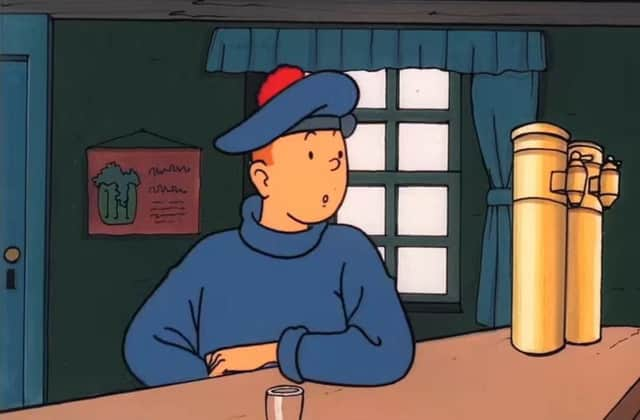

While Tintin merely stopped off in some countries, the bulk of The Black Island - the seventh volume in The Adventures of Tintin series - takes place in a fictionalised version of our country.
But the quiffed reporter’s trip to the UK to break up a crime ring could have been very different, had Hergé not instructed his assistant to undertake an in-depth research tour of the British Isles in order to correct the first edition.
Advertisement
Hide AdAdvertisement
Hide AdThe idea behind The Black Island was borne from a recurring dream, in which Hergé saw visions of a car stuck in snow.
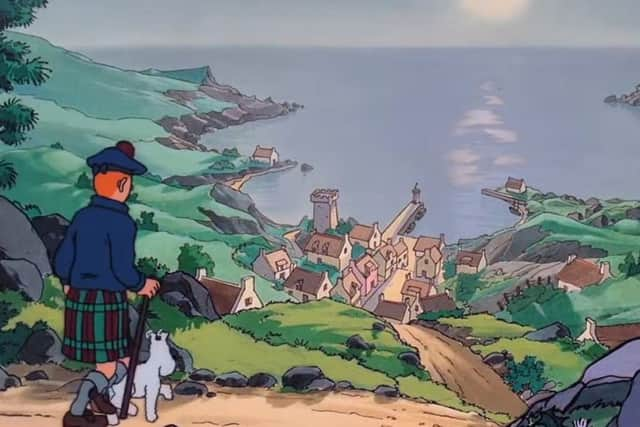

He shelved his initial idea for a tale with a contemporary backdrop of Nazi Germany, and began to plan an adventure in which Tintin would be sent to the far north, with Greenland and Canada among his early ideas.
In the end, however, the young reporter only made it as far as Scotland’s west coast, and the car in the snow became a mere design on a Christmas card.
Ahead of his first version of The Black Island, Hergé travelled to London and the southern coast of England, having already decided to set the adventure primarily in Britain.
Given the country’s friendly relations with Hergé’s native Belgium, it was perhaps unsurprising that he chose to set the story in Britain.
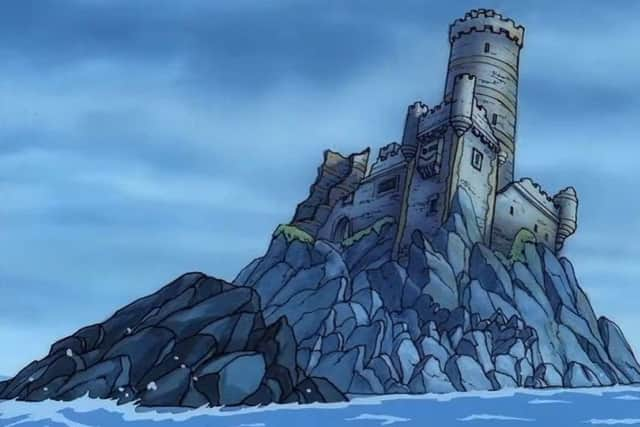

Southampton (Tintin in America, The Blue Lotus) and Liverpool (The Blue Lotus) had cropped up in previous stories and Hergé took Tintin to Dover, Kent and the fictional Eastdown, in Sussex, as well as parts of Scotland in The Black Island.
The story itself centred around Tintin’s pursuit of forgers, and according to Michael Farr’s 2001 book Tintin: The Complete Companion, the main antagonist - named Dr J.W. Müller - was loosely inspired by Scots-born forger and secret agent Georg Bell, who had been a strong supporter of the Nazis in the 1930s and an associate of Ernst Röhm, co-founder of the Sturmabteilung, or Brownshirts.
Advertisement
Hide AdAdvertisement
Hide AdThe first edition was published in 1938, after initially appearing in serial form in Le Petit Vingtieme - the children’s supplementary magazine issued along with Le Vingtieme Siecle, a conservative, Catholic newspaper based in Brussels.
Yet with Britain on the brink of war with Germany, there is little in the book to hint at the turmoil engulfing Europe at the time.
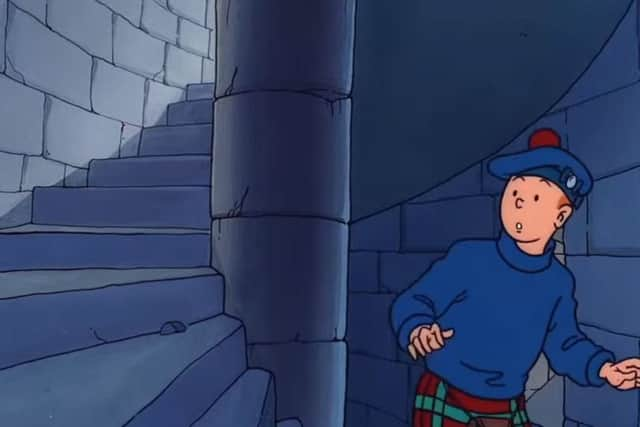

However, the issue of banknote forgery was a topical crime, according to Tintin: Hergé and his Creation (1991) by Harry Thompson.
There are one or two nods to Scottish history and heritage in the story, namely the inclusion of a mysterious ‘beast’ a la the Loch Ness Monster, and similar themes to John Buchan’s 1915 novel The 39 Steps, as well as Alfred Hitchcock’s film adaptation of 1935.
Drawing Scotland
As his popularity grew, Hergé and his team including his ‘right hand man’ Bob De Moor, Edgar P Jacobs and aviation expert Roger Leloup regularly revisited stories to redraw and colour the original black and white cartoon strips.
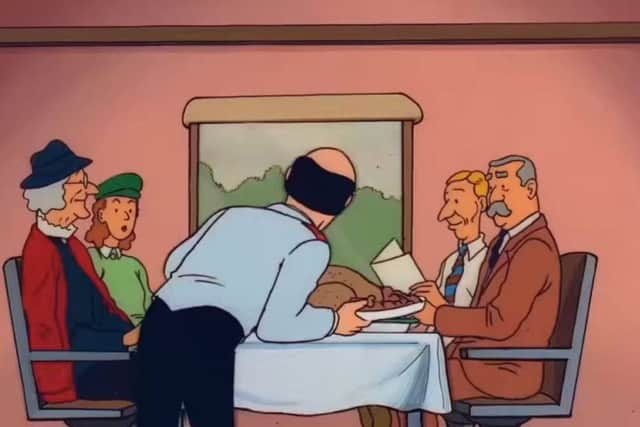

Hergé had been unhappy with the 1938 publication of The Black Island due to numerous errors in the story - including the omission of his name from the front cover - and his team set about correcting the mistakes before a second, colourised version of the story was published in 1943.
But it wasn’t until the early 1960s, when Hergé’s English language publishing firm Methuen were evaluating the book for translation, that the story was revisited by the cartoonist and his associates.
Advertisement
Hide AdAdvertisement
Hide AdMethuen felt that the Britain depicted in the comic would appear out of date to UK readers - especially when compared to later Tintin adventures which featured more up-to-date and advanced technology - and even a trip to the moon.
All in all, Methuen identified more than 130 errors in the story. Over a two-year period, the artists would painstakingly update uniforms, signage, even the style of gates in the English countryside.
Hergé was far too busy working on newer Tintin adventures to undertake the research himself, and sent his ‘right-hand man’ De Moor to Britain to take notes for the English translation of the story.
De Moor left no stone unturned in his quest for minute accuracy.


He took note of car numberplates and the style of fire engines; he took photos of road signs and skylines and visited Scotland Yard.
He took a trip to view Rudyard Kipling’s former house Bateman’s, in Sussex - the grand Jacobean-style mansion which became the basis for Dr Müller’s house in the redrawn story - and Dover’s White Cliffs.
When De Moor travelled north to Edinburgh he was given a complete police uniform, with its subtle differences to English police uniforms. However, British Rail staff reportedly grew suspicious when he asked to borrow a driver’s uniform and refused the request.
Advertisement
Hide AdAdvertisement
Hide AdDe Moor’s travels throughout the UK are plain to see on the page of The Black Island - the island itself, and the ruined Craig Dhui castle are based on the Isle of Arran and Lochranza Castle while the fictional village of Kiltoch used Castlebay on Barra as a model.
De Moor returned to the studio with filled sketchbooks and notes and the team set to work on the updated version. Leloup worked hard updating aircraft with contemporary planes, while the pub in Kiltoch was renamed from Ye Dolphin to The Kiltoch Arms. Not every alteration could be viewed as a positive step, however. It’s a shame to note that the goods train with its recognisable Johnnie Walker whisky wagon is now pulling a wagon of the then fictional Loch Lomond whisky, which Hergé revisited in future stories. Loch Lomond whisky reappeared in The Crab with the Golden Claws; The Secret of the Unicorn, Tintin and the Picaros and Tintin and Alph-Art.
(Coincidentally, the real Loch Lomond distillery was established in 1964, with production beginning a year later. A Loch Lomond distillery had been established in Arrochar in 1814, closing just three years later in 1817. It’s hard to fathom that Hergé had come across the first distillery, or even that he or De Moor were aware of the 1960s incarnation in West Dunbartonshire at the time the wagon was rebranded).
The Craig Dhui monster
Named Ranko, the ferocious gorilla kept by the forgers on the eponymous island can be viewed as an amalgam of several well-known figures.
The first King Kong film was released in 1933 and just a year later, the infamous hoax photograph of the Loch Ness Monster was published.
Add to that the 1911 novel by Phantom of the Opera author Gaston Leroux, Balaoo, about a monkey brought up as a human by a scientist, and it’s clear to see where the idea for Ranko came from.
Will ye no’ come back again?
Sadly, Hergé didn’t revisit Scotland with Tintin. The reporter’s future adventures took him far and wide - even to outer space - and to a handful of fictionalised countries including Balkan states Borduria and Syldavia and the South American countries of San Theodoros, São Rico and Nuevo Rico.
Advertisement
Hide AdAdvertisement
Hide AdBut perhaps we should be thankful that Tintin’s brief flirtation with Scotland was approached with care.
True, the reporter dons a kilt, sporran and tammy not long after pitching up on the west coast but the overall impression is that Hergé’s warmth for England extended north of the Border as well.
And above all, it’s hard to be annoyed when Scotland featured in such an iconic comic series.